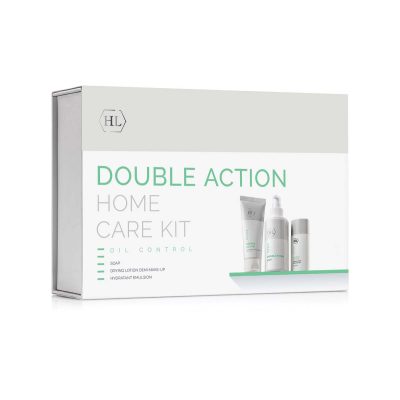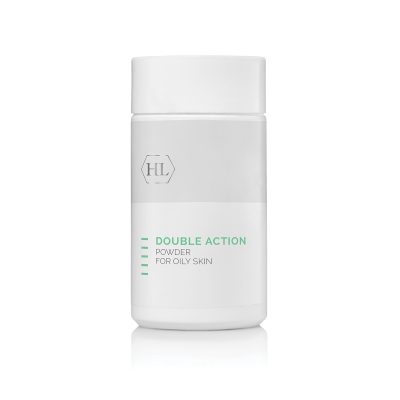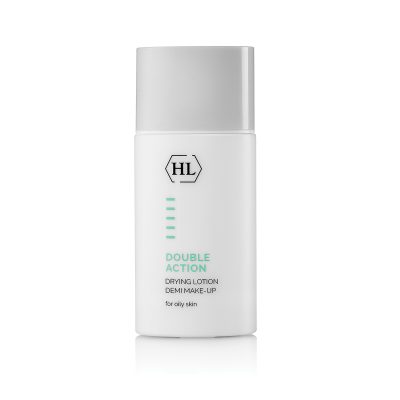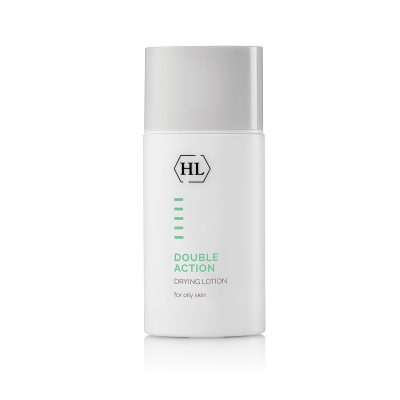Inflammatory Skin Diseases—Characteristics, Causes and Treatment Methods
Inflammatory Skin Diseases—Characteristics, Causes and Treatment Methods
Many people struggle with inflammatory skin diseases such as seborrhoea, psoriasis, atopic dermatitis and rosacea. These diseases cause aesthetic disorders and often result in suffering and a sense of discomfort in the skin.
The exact cause of these diseases is unclear, but they are all chronic, related to the immune system’s defective reaction and are accompanied by an inflammatory condition of the skin. Skin inflammation is an essential reaction of the immune system; its goal is to protect the body from the invasion of intruders such as, viruses, bacteria or parasites. At times, the inflammatory reaction becomes out of control. In this state, the “army” of the immune response continues to operate and healthy skin tissue unintentionally gets caught in the cross fire and sustains damage.
Seborrhoeic dermatitis — Seborrhoea
In Latin, the word seborrhoea means “discharge of sebaceous matter”, whereas the word dermatitis means “inflammation of the skin”. And indeed, seborrhea is a skin disease that involves the sebaceous glands. Its manifestations are the appearance of scales on the background of red skin, an increased secretion of sebum in the areas rich in sebaceous glands, the rapid keratinization of the epithelial cells and their accumulation above the skin. Seborrhoea can appear in all skin types.
Characteristics: The development of seborrhoea is gradual. The main symptoms are a red, burning rash, which is accompanied by dry or greasy skin scales, swelling, a yellowish sebaceous secretion and in some cases also an itchy sensation, mainly in the area of the scalp.
The areas of the scalp and the face are especially rich in these glands. The drying of the sebaceous secretion with keratin (the outermost layer of the skin, which falls constantly) creates the scales, which are mostly noticeable on the face and head. The scales are usually fine, with a powder-like form, and if left untreated, they become more coarse, yellow and greasy. In addition to the aesthetic problem, the scales and the redness cause discomfort and suffering.
Causes: Studies indicate that there are several reasons involved in the appearance of the disease and its outbreak:
- * A defective reaction of the immune system to a type of fungus called Malassezia pityrosporum ovale, naturally found on the skin. However, it is neither a fungal nor infectious disease.
- * Disruption in the operation of the hormonal system—the hypothesis is hormonal factors fulfill a role in this disease is reinforced by the fact that its incidence increases after adolescence.
- * Nutritional deficiencies, and especially deficiencies in vitamins B6, B12 and biotin.
- * Food allergies.
- * The disease psoriasis.
- * Diseases related to the nervous system.
- * Extreme weather changes (seborrhoea can become worse in the winter, while in the summer, the condition improves).
- * Stress and mental pressure.
Psoriasis
Psoriasis belongs to the category of autoimmune diseases such as vitiligo and lupus. Psoriasis is characterized by a skin rash, patches covered in scales which manifest through dry skin layers raised above the skin, most of them red-purple and covered with thick slivery-white scales.
The lesions, predominantly appear on the scalp, elbows, knees, back, chest, abdomen, nails and genitalia, can vary in size and cover small or extensive areas of the body. The disease is not contagious and the severity of its symptoms varies from one person to another.
The disease is caused by the hyperkeratosis of the cells of the epidermis.
Characteristics:
- * A rash — which is usually symmetrical, involving red patches covered with a thick layer of scales. The rash can also manifest in various forms, and each form has a name that describes it:
Guttate psoriasis—looks like tiny droplets scattered across the chest, abdomen and back, and usually appears after an acute bacterial infection (strep throat— streptococcal pharyngitis), and mainly affects children and young people.
Plaque psoriasis—plaque-like shaped patches
Pustular psoriasis—yellow pus, typically affects the hands and feet.
- * 10%–20% of people who suffer from psoriasis develop psoriatic arthritis.
- * Most people experience an exacerbation of symptoms during the winter and relief during the summer.
Causes
Several causes are involved in its manifestation and outbreak:
- * Genetic predisposition— a genetic connection is indubitably identified in 70% of the cases.
- * An inflammatory process and a multiplicity of blood vessels in the dermis layer.
- * An accelerated proliferation of the squamous cells in the epidermis. Normally, the squamous cells are replaced once a month. In psoriasis, the process is shortened to only a few days, and as a result, new skin cells accumulate of the epidermis layer in an excessively rapid pace, before the old cells have had time to fall, thus creating a thick white layer of scales.
- * Mental stress, trauma, and stressful situations
- * Nutritional deficiencies— vitamin A, zinc, vitamin D
- * Defective liver function
- * Protein absorption problems
- * Excessive consumption of alcohol and animal fats
- * Smoking
Atopic Dermatitis
Atopic dermatitis, also known as atopic eczema, is an itching inflammatory skin disease, which mainly appears during infancy and affects the facial area, the hand joints and the internal areas of the joints and knees. The disease sometimes becomes chronic and continues during adulthood. In some cases, it becomes less severe over the years.
Characteristics:
- * Rash: a reddish rash accompanied by significant dryness in the skin.
- * Itching: the disease is accompanied by intense itching which damages the patient’s quality of life.
- * Skin inflammation: skin infections, especially those involving staphylococcus bacteria or fungi, constitute a powerful trigger for skin inflammation and its transformation into a chronic condition of inflammation.
Causes: the exact cause is unknown, but it has been found that the following factors fulfill a central role:
- * A disorder in the wholeness of the skin and the function of the skin barrier—which enables the penetration of allergens, microorganisms or other irritating substances.
- * A defective function of the immune system and a disorder in the body’s control over it—mast cells from the skin of people who suffer from atopic dermatitis have been found to contain changes that lead to the releasing of more histamine and other allergenic substances, and cause itching and eczema. Moreover, an excess of inflammation-encouraging prostaglandins has been found in their skin, and conversely, a lack of inflammation-inhibiting prostaglandins.
- * Genetics—it has been found that children of parents with asthma or a history of allergies are predisposed to developing the disease.
- * External factors may adversely affect the balance of the immune system and contribute to the outbreak of the disease or worsen the inflammation—including physical irritation, such as skin dryness or injury; skin infections, such as bacteria, viruses and fungi; allergy—contact with a foreign external factor that triggers an allergic reaction (allergen), such as certain foods, irritating products or dust mites; and also, mental stress.
Rosacea
Rosacea, sometimes also called adult acne (since it usually appears after the age of 30), is a chronic skin disease, which is expressed by redness, warts and small, acne-like red lesions.
Hormonal changes cause the instability of the blood vessels, blushing and hot flashes, while the stasis of the blood in the vessels and capillaries leads to the infection of the sebaceous glands.
Characteristics
- * Increased redness of the facial skin, predominantly in the cheeks, forehead and chin, as a result of the expansion of capillaries.
- * Nodules and small red acne-like lesions—it is important to notice that people who suffer from rosacea do not have comedones.
- * Enlargement of the nose.
Causes:
- * Genetic predisposition
- * The involvement of a parasite named “demodex”, which penetrates the depths of the dermis and instigates inflammation.
- * Sun exposure—considered a central cause for the appearance of rosacea, due to the fact that the heat expands the blood vessels, and thus in warm countries, the incidence of the problem is relatively high.
- * Additional environmental causes such as extreme temperature changes, wind, moisture, heat, sun exposure, intense physical effort and more. The causes for the expansion of the blood vessels significantly influence the severity of the disease.
- * Mental stress
- * Excessive consumption of alcohol
- * Spicy foods
All of the inflammatory skin diseases can be cured with the help of conventional medicine. In addition, the patient’s quality of life can be significantly improved with the assistance of designated cosmetic products that operate to soothe and relieve the symptoms of the diseases.

-
Sale!

DOUBLE ACTION OIL CONTROL KITSOAP, HYDRATANT EMULSION, DRYING LOTION WITH DEMI MAKE-UP
79,42 €Original price was: 79,42 €.63,53 €Current price is: 63,53 €. Add to cart -
Sale!

DOUBLE ACTION POWDER 45gr
35,98 €Original price was: 35,98 €.28,78 €Current price is: 28,78 €. Add to cart -
Sale!

DOUBLE ACTION DRYING LOTION WITH DEMI MAKE-UP 30ml
35,98 €Original price was: 35,98 €.28,78 €Current price is: 28,78 €. Add to cart -
Sale!

DOUBLE ACTION DRYING LOTION 30ml
25,98 €Original price was: 25,98 €.20,78 €Current price is: 20,78 €. Add to cart